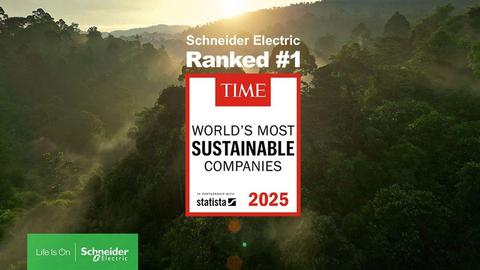Analyses & Studies
Positioning solar power for Singapore's net zero future

Achieving emissions to as close to zero as possible will require a headstrong conviction to move away from fossil fuels and adopt greener and renewable sources of energy, says ENGIE. Photo: ENGIE
As Singapore mulls over its 2050 net zero target, major economies around the world have already set forth plans to reach net zero by that year. The consideration to set a definitive timeline that aligns with Singapore’s long-term climate target will require effort from all sectors of society. Achieving emissions to as close to zero as possible will require a headstrong conviction to move away from fossil fuels and adopt greener and renewable sources of energy.
Current world events are also putting a harsh focus on how we power the global economy. The combination of threats to energy supplies, alarming price volatility and worsening climate change are creating the perfect storm.
Governments around the globe are realising that fossil fuel supplies are not guaranteed, and this is providing fresh impetus to the wider adoption of renewable energy sources. The argument in favour of renewables has been driven for many years by the growing threat to the planet’s climate posed by greenhouse gas emissions. During last November’s COP26 summit in Glasgow, world leaders debated the urgent steps necessary to prevent the planet from reaching a climate tipping point. Unfortunately, the promises made at the summit to reduce or eliminate emissions may be neither enough nor in time.
Fossil fuels must be eliminated
A study by Columbia University's Centre on Global Energy Policy analysed countries' climate plans and found that promised action would reduce greenhouse gas emissions by just 9% by 2030, far below the global goal of cutting emissions by nearly half by that year. Climate scientists are making it clear that a global boycott of fossil fuels is now becoming a matter of urgency, but governments are still arguing over funding and the phasing out of subsidies.
The solar alternative
Vested interests will always claim that replacing legacy fossil fuel power generation with renewable sources will be expensive and inefficient.
However, the energy price hikes we have been seeing are not necessarily or even primarily caused by renewables. There are multiple and complex reasons for the dramatic rise in energy prices, including a combination of supply and demand factors that have gradually tightened markets over a long period. At the same time, consumer demand has picked up in the post-Covid world, driving demand for all goods. The conundrum is that the cost of conventional fuels has been moving up in response to growing demand, while renewables are not yet sufficiently available to meet the need.
Besides geopolitical threats to energy supplies, these new higher energy prices validate the economic price point of renewable energy sources and underline the need to accelerate their adoption. It is also a fact that fossil fuels are a finite and diminishing resource, and regardless of price, the need remains to reduce or even eliminate their dangerous emissions.
Around the world, installed solar power capacity has increased 17-fold, and its price has plummeted by more than 80% in a 10-year period. Solar photovoltaic (solar PV) power is proving to be not only effective but affordable, particularly in countries whose governments provide incentives to help the transition from fossil fuels. Solar panel efficiency has risen – prototypes today are capable of 30% efficiency and their performance is constantly improving. There was a price increase in 2021, and panels have been more costly over the past several months due to a shortage of semi-conductors. However, the overall trend is that renewables are becoming more affordable, in both absolute terms and relative to fossil fuels.
Regional trends
The Southeast Asia region is emerging as a hotspot for global solar investment with over US$10 billion ($13.7 billion) invested just last year, according to reports from the APAC Power and Renewables Conference Southeast Asia currently has 28GW of installed solar capacity, and will see the fastest power demand growth of any region over the next five years. In Malaysia, the sector is growing with strengthening government support and has the potential to generate more than enough electricity to meet its current demand, if all the roofs in Peninsular Malaysia were equipped with solar panels.
In the Philippines, the country’s proposed National Renewable Energy Program (NREP) 2020-2040 is targeting a 35% share of renewable energy (RE) in the power generation mix by 2030, rising to a 50% share by 2040. Onsite rooftop and large-scale solar installations can be contracted at significant discounts, if tied to the grid. Additionally, a pool of local and international investors are supporting the national effort to accelerate the deployment.
Solar power is also an important feature of Singapore’s existing Green Plan, which aims to deploy 2GW of solar PV by 2030. Solar energy currently provides less than 1% of Singapore’s energy needs, but is set to play a key role amid the transition to a more sustainable energy landscape.
Grid-connected installed solar PV capacity in Singapore was at 527 MWp at the end of the second quarter of last year. The aim is to rapidly scale up by 2030 – with plans to produce enough to power 350,000 households a year. That is about 4% of Singapore’s electricity demand.
Solar power purchase agreements
There are substantial benefits to adopting solar power for building and facility owners. In addition to helping meet carbon footprint reduction targets, there are important financial advantages across a typical 20-year Solar Power Purchase Agreement (PPA) contract. Owners pay zero upfront – with no capital investment, they pay only for the electricity they use. Power is provided at a fixed price with a hedge that ensures price certainty, regardless of fluctuations in the electricity market. Operation and maintenance of the solar installations is handled by the vendor, eliminating manpower costs, and providing peace of mind.
With energy prices at historic highs, the incentive to switch to renewables has never been greater. Solutions for mitigation are available right now — for example, prudent operators will implement energy management processes to make the most efficient use of their existing energy supply. They will also ensure they are able to hedge against fluctuations in electricity pricing. Authorities need to invest more in renewable energy infrastructure to better meet the growing demand. This also includes cutting down fossil fuel emissions on one hand, while minimising the impact of the energy crisis on the other.
In the move to embrace solar power, Singapore can reposition its economy and establish its competitive edge to enhance the nation’s value proposition for the future low-carbon global economy.
By Rodrigo Hernández , Deputy head solar C&I at ENGIE Southeast Asia.
SOURCE: The EDGE Singapore


